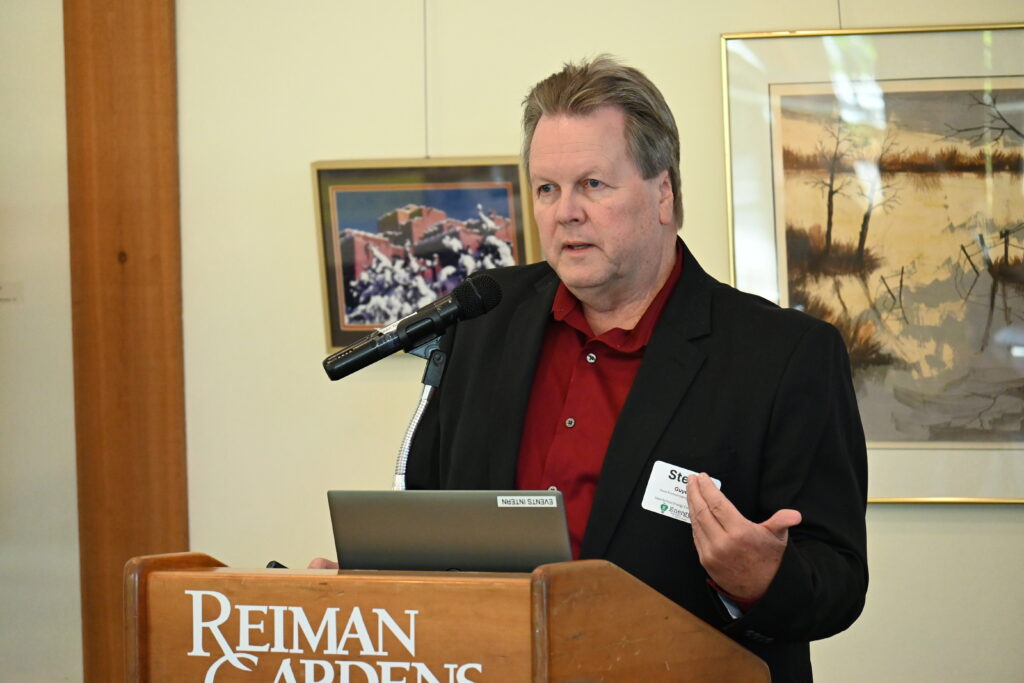Steve Guyer of the Iowa Environmental Council (IEC) spoke about the Inflation Reduction Act (IRA), net metering, and direct pay for clean energy incentives for schools during the September 25 Iowa School Energy Conference in Ames.
Guyer explained that this landmark federal legislation provides Iowa with new funding opportunities for expanding clean energy, energy efficiency, and natural infrastructure, improving economic and energy security in the process. Though in the past, schools have not benefitted from tax credits, the IRA has monetization provisions that allow for direct pay for government and tax-exempt entities, as well as transfer provisions.

- Key renewable tax credits in the IRA include Section 48 to 48E: a 30 percent investment tax credit for solar, small wind, geothermal, fuel cell, microturbine, combined heat and power, waste energy recovery, energy storage technology, and biogas constructed before January 1, 2025
- Section 45 to 45Y: production tax credits on solar, geothermal, wind, closed- and open-loop biomass, landfill gas, municipal solid waste, hydropower, and marine and hydrokinetic facilities constructed before January 1, 2025
- Bonus credits for investment tax credits and production tax credits (48, 48E, 45, and 45Y): include a 10 percent bonus for projects located in energy communities, and a 10 percent bonus for meeting domestic manufacturing requirements for steel, iron, or manufactured components
- After 2024, there will be a 10 percent bonus for projects located in low-income communities or on Tribal land and a 20 percent bonus for projects located in low-income residential buildings or part of low-income economic benefit projects
- 179D deductions for energy efficiency improvements.: every three years building owners are eligible for a 179D tax deduction for improving building efficiency by 25 percent. Tax exempt entities like schools can benefit by allocating the 179D deduction to architects, engineers, or contractors.
With provisions for Direct Pay, net metering, and other incentives, the IRA provides numerous opportunities for schools to control, predict, and improve cost-effectiveness of future energy costs through investments in solar, wind, and energy storage, as well as through increased energy efficiency and the use of geothermal.
For more information on funding opportunities, visit the Iowa Energy & Infrastructure Funding Hub, a resource developed by IEC to provide information to help Iowans access key federal programs.
